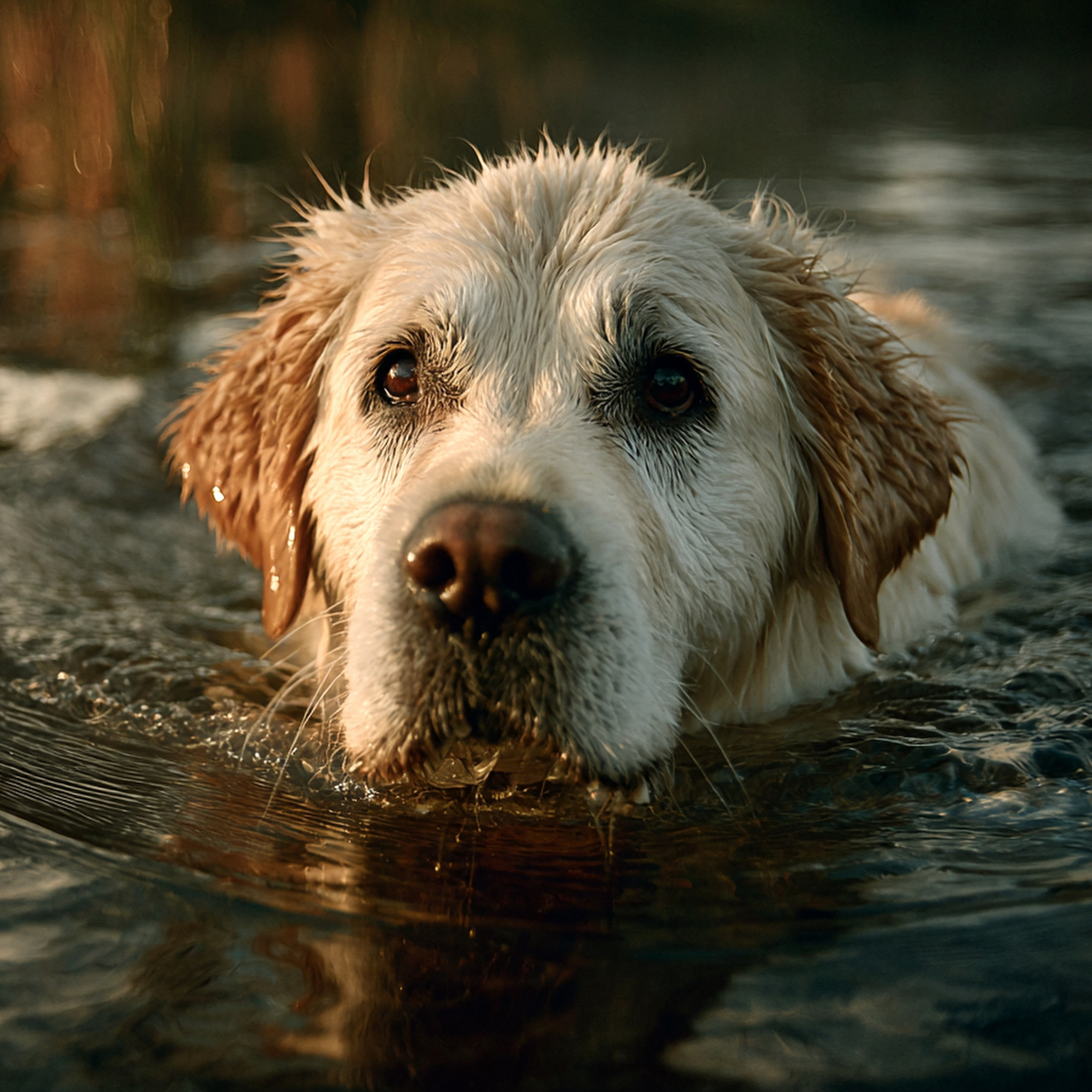As our beloved dogs enter their golden years, it’s natural to notice them slowing down. They may take a little longer to rise, spend more time resting, or show less enthusiasm for long walks. Often, senior pets are described as sleeping all day, but this can sometimes be more than just a sign of getting older. Reduced activity may also be linked to joint discomfort, which makes movement less appealing.
Supporting joint health with Collagenie’s hydrolysed collagen peptide meal booster, alongside a balanced diet, can help support mobility and comfort, allowing your dog to continue enjoying life’s simple pleasures. But nutrition is only part of the picture. Senior pets also thrive when their days include gentle movement, mental stimulation, and emotional connection. These elements work together to keep them comfortable, confident, and happy as they age. Let’s explore how you can enrich their environment to nurture their mind, body, and spirit throughout their golden years.
Shorter, Slower Walks
Although your dog may not be able to manage the 30-minute walk or run they once did, it doesn’t mean they’ve lost the joy of getting outside. Gentle, shorter walks are still so valuable for their physical and mental wellbeing.
Movement helps maintain muscle mass and joint flexibility, as the saying goes, “move it or lose it.” Of course, everything should be done within reason, and they shouldn’t be sore or limping the next day. These shorter strolls also provide wonderful mental stimulation through new smells, sights, and friendly interactions along the way. Let your senior dog set the pace, take time to sniff, and simply enjoy being out and about. Think of it as a “sniffari,” where the journey is more important than the destination.
Treat foraging games
Some dogs love nothing more than using their nose to hunt for hidden treasures. Try hiding a few of their favourite treats or toys around the house or garden and watch them explore. It’s a simple activity that encourages gentle movement and mental stimulation without putting extra strain on their body.
For a healthy twist, use low-calorie options like blueberries or carrot sticks. These provide extra nutrition without contributing to unnecessary weight gain. Just remember to count these treats toward their daily food allowance when serving dinner. These small moments of movement and discovery throughout the day can add up to big benefits over time, keeping your senior dog active, engaged, and happy.
Snuffle mats and puzzle feeders for senior dogs
Puzzle feeders or snuffle mats turn mealtime into a fun activity without adding extra calories. You can place their regular food in the feeder to make them “work” for their meal. It’s a great way to slow down eating and add mental stimulation. You can also make DIY versions at home using safe household items like muffin tins, toilet rolls, or towels; however, this should be done under supervision. For added interest, try placing dog-safe scents such as coconut, ginger, or cinnamon on the mat for a little extra sniffing fun.
Your senor dog might love soft ball fetch
This is for the pets who still love a good game of fetch but might pull up a bit sore. Try swapping the hard, fast-moving tennis ball for a soft, lightweight one that is gentler on their teeth and joints. Keep throws short and play on soft ground so they can chase and retrieve comfortably.
It is no longer about speed or distance. The goal is to keep them moving and let them enjoy a game they have always loved. This gentler version of fetch helps maintain coordination, provides light exercise, and most importantly, reminds them that they still have it.
Selective social interactions for senior pets
The busy dog park might not be the best option for your senior pet at this stage. Young, energetic dogs can sometimes be a bit too much for an older companion who simply wants to enjoy a calm stroll without being bowled over. Instead, look for quieter opportunities for social time.
Many senior dogs enjoy gentle company with other calm, older dogs. Try arranging relaxed playdates where they can wander together, sit under a tree, and take in the smells of the world at their own pace. These slower, low-stress interactions still provide valuable mental and emotional stimulation. Always keep an eye on your dog’s body language and let them decide how much interaction they’re comfortable with.
Swimming can help senior dogs
Swimming is a fantastic low-impact activity that many senior dogs can enjoy, whether at a local creek, a home pool, a flat beach, or in a controlled hydrotherapy environment. The water provides gentle resistance that works muscles without putting strain on joints, making it a safe and effective way for older dogs to stay active, maintain muscle tone, and build endurance. Many dogs enjoy weekly or fortnightly trips to a hydrotherapy clinic, while others love exploring a nearby creek or beach. Swimming also offers mental stimulation, keeping their minds engaged and providing enrichment in a fun, low-stress way.
Swimming may not be suitable for every dog, so it’s always best to discuss this activity with your veterinarian to see if it’s the right choice for your senior pet.
Supporting the whole pet
Caring for a senior dog means considering all aspects of their wellbeing, including joint health, mobility, emotional balance, physical comfort, and mental stimulation. Enrichment helps maintain their quality of life, while supplements like Collagenie’s meal booster can support joint health, helping them continue enjoying these activities longer.
If your senior pet shows any new or concerning behaviours, such as limping, anxiety, or reluctance to move, it’s always best to consult your veterinarian. They can rule out underlying medical issues and help you tailor a plan for nutrition, exercise, and enrichment that suits your pet’s individual needs.
Here’s to keeping your golden oldie happy, active, and thriving for years to come.
Happy Enrichment!




